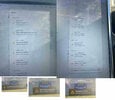Our 90D (2015 Model S) shut down at the supercharger 200 miles from home with a list of errors. Tesla reps at mobile service and at the local service center said the car, "was not safe to drive" to tow it, and that the errors indicated that one of the cells was overvoltage.
Now I went through batterygate with my old P85, so I'm anticipating Tesla's lies and warranty avoidance tactics; "normal behavior, wear and tear, not technically part of the battery, customer fault", etc.
So to prepare for that, what are some of the objections you'd expect from Tesla service on what seems like a battery failure?
P.S. Both reps confirmed the errors did not indicate a 12v battery problem, or a loose frame cable. They both separately confirmed it was a cell overvoltage situation. I did get the car home and plan to do a battery scan before taking it in to service center. Just need to wait for the updated OBD connector to arrive in 'weeks.' Car is out of warranty, but still has 'months' on the battery/driveline warranty.
Now I went through batterygate with my old P85, so I'm anticipating Tesla's lies and warranty avoidance tactics; "normal behavior, wear and tear, not technically part of the battery, customer fault", etc.
So to prepare for that, what are some of the objections you'd expect from Tesla service on what seems like a battery failure?
P.S. Both reps confirmed the errors did not indicate a 12v battery problem, or a loose frame cable. They both separately confirmed it was a cell overvoltage situation. I did get the car home and plan to do a battery scan before taking it in to service center. Just need to wait for the updated OBD connector to arrive in 'weeks.' Car is out of warranty, but still has 'months' on the battery/driveline warranty.



